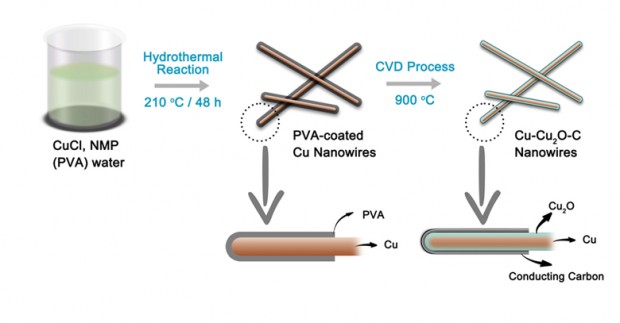If graphene is going to be a ubiquitous material in the future, production methods need to change. An Aug. 7, 2015 news item on Nanowerk announces a new technique to achieve that goal,
Producing graphene in bulk is critical when it comes to the industrial exploitation of this exceptional two-dimensional material. To that end, [European Commission] Graphene Flagship researchers have developed a novel variant on the chemical vapour deposition process which yields high quality material in a scalable manner. This advance should significantly narrow the performance gap between synthetic and natural graphene.
An Aug. 7, 2015 European Commission Graphene Flagship press release by Francis Sedgemore, which originated the news item, describes the problem,
Media-friendly Nobel laureates peeling layers of graphene from bulk graphite with sticky tape may capture the public imagination, but as a manufacturing process the technique is somewhat lacking. Mechanical exfoliation may give us pristine graphene, but industry requires scalable and cost-effective production processes with much higher yields.
On to the new method (from the press release),
Flagship-affiliated physicists from RWTH Aachen University and Forschungszentrum Jülich have together with colleagues in Japan devised a method for peeling graphene flakes from a CVD substrate with the help of intermolecular forces. …
Key to the process is the strong van der Waals interaction that exists between graphene and hexagonal boron nitride, another 2d material within which it is encapsulated. The van der Waals force is the attractive sum of short-range electric dipole interactions between uncharged molecules.
Thanks to strong van der Waals interactions between graphene and boron nitride, CVD graphene can be separated from the copper and transferred to an arbitrary substrate. The process allows for re-use of the catalyst copper foil in further growth cycles, and minimises contamination of the graphene due to processing.
Raman spectroscopy and transport measurements on the graphene/boron nitride heterostructures reveals high electron mobilities comparable with those observed in similar assemblies based on exfoliated graphene. Furthermore – and this comes as something of a surprise to the researchers – no noticeable performance changes are detected between devices developed in the first and subsequent growth cycles. This confirms the copper as a recyclable resource in the graphene fabrication process.
“Chemical vapour deposition is a highly scalable and cost-efficient technology,” says Christoph Stampfer, head of the 2nd Institute of Physics A in Aachen, and co-author of the technical article. “Until now, graphene synthesised this way has been significantly lower in quality than that obtained with the scotch-tape method, especially when it comes to the material’s electronic properties. But no longer. We demonstrate a novel fabrication process based on CVD that yields ultra-high quality synthetic graphene samples. The process is in principle suitable for industrial-scale production, and narrows the gap between graphene research and its technological applications.”
With their dry-transfer process, Banszerus and his colleagues have shown that the electronic properties of CVD-grown graphene can in principle match those of ultrahigh-mobility exfoliated graphene. The key is to transfer CVD graphene from its growth substrate in such a way that chemical contamination is avoided. The high mobility of pristine graphene is thus preserved, and the approach allows for the substrate material to be recycled without degradation.
Here’s a link to and citation for the paper,
Ultrahigh-mobility graphene devices from chemical vapor deposition on reusable copper by Luca Banszerus, Michael Schmitz, Stephan Engels, Jan Dauber, Martin Oellers, Federica Haupt, Kenji Watanabe, Takashi Taniguchi, Bernd Beschoten, and Christoph Stampfer. Science Advances 31 Jul 2015: Vol. 1, no. 6, e1500222 DOI: 10.1126/sciadv.1500222
This article appears to be open access.
For those interested in finding out more about chemical vapour deposition (CVD), David Chandler has written a June 19, 2015 article for the Massachusetts Institute of Technology (MIT) titled: Explained: chemical vapor deposition (Technique enables production of pure, uniform coatings of metals or polymers, even on contoured surfaces.)
